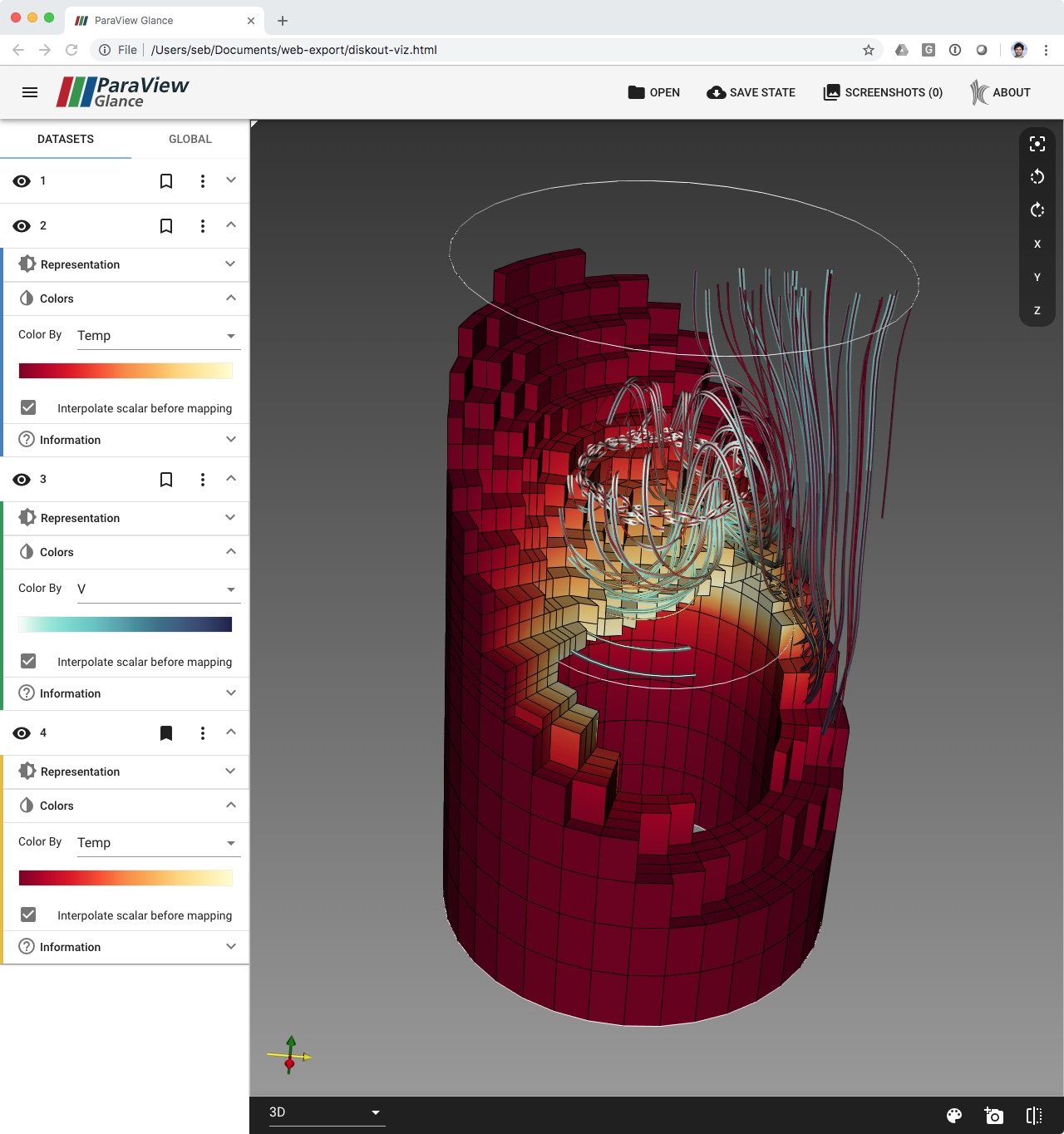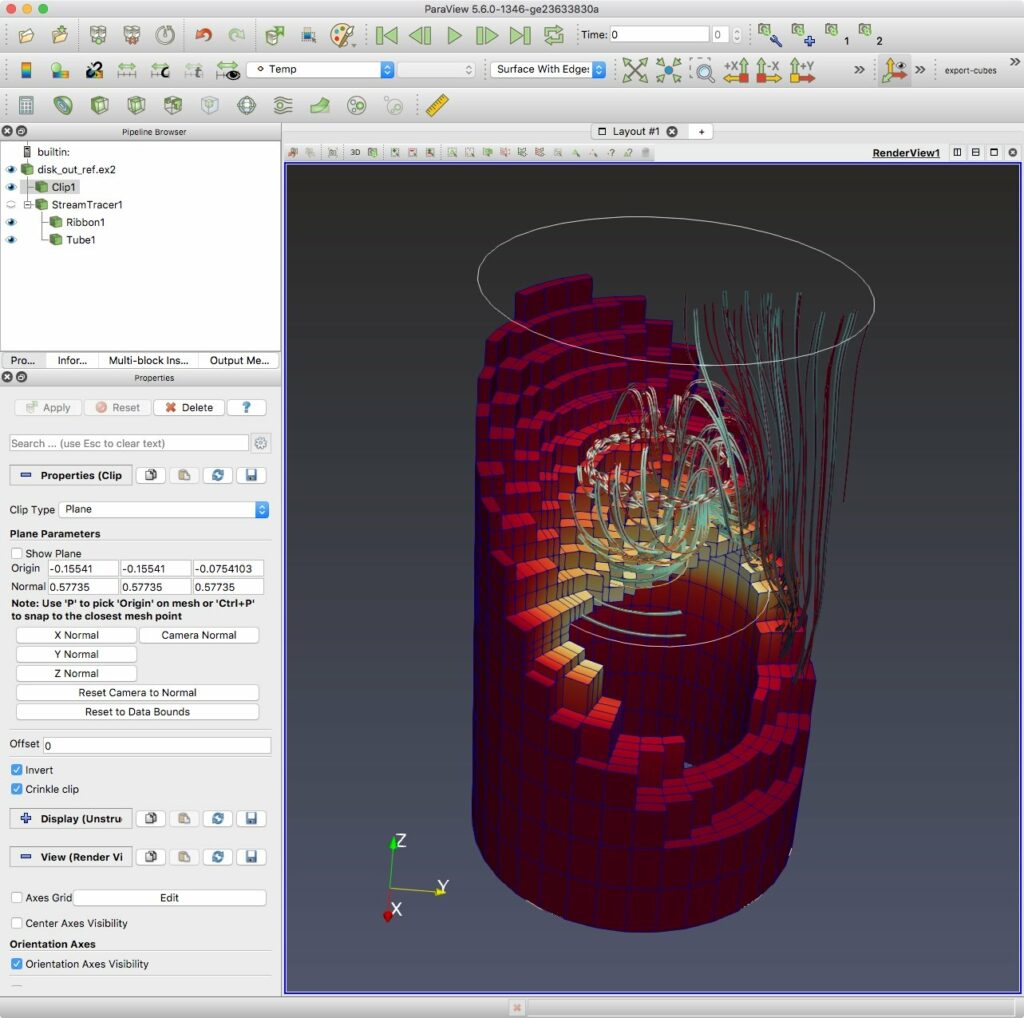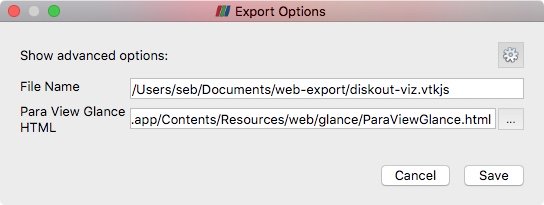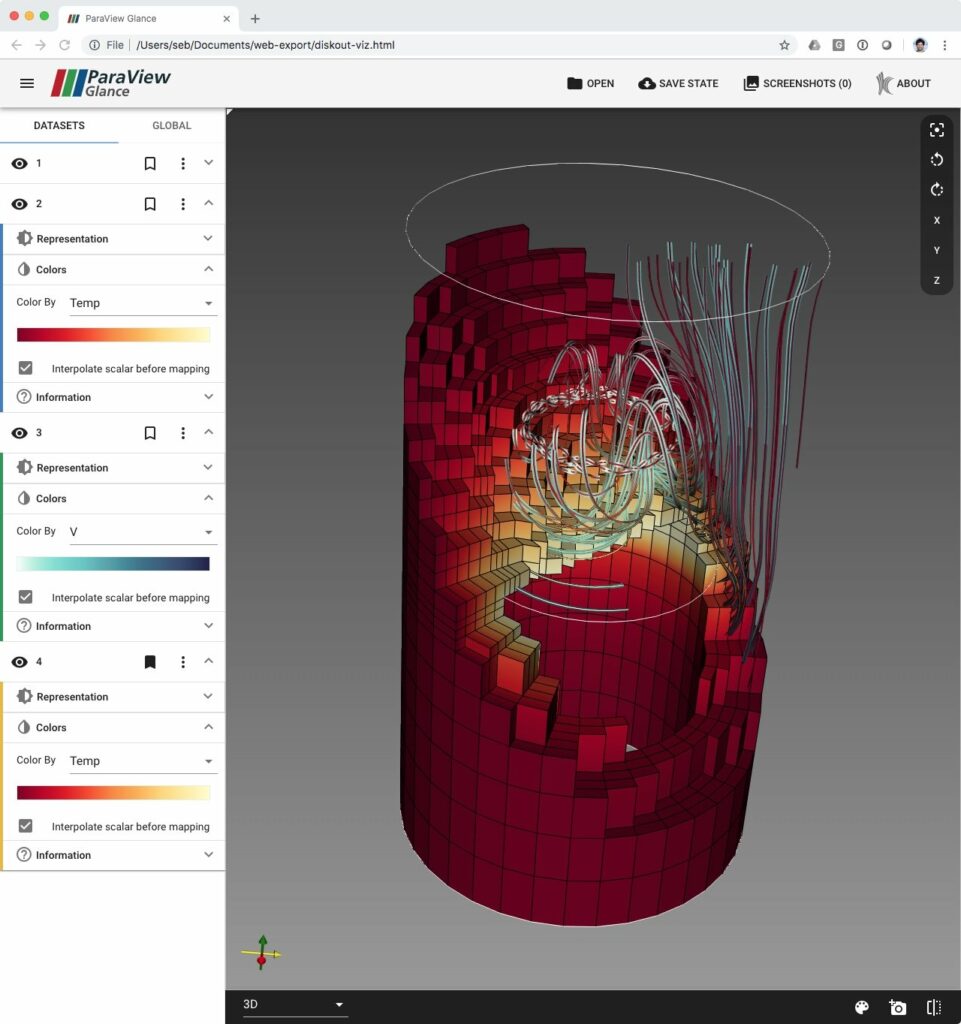Exporting ParaView scenes to ParaView Glance

For a long time, ParaView’s WebGL exporter in the Scene Exporter of ParaView has allowed you to generate a standalone HTML file that contains 3D geometry with pseudocoloring that can then be visualized inside a browser. Other than letting you interact with the data by zooming, rotating, and panning, a scene exported this way is fairly static and allows limited interaction with the exported data.
With our recent work on vtk.js and ParaView Glance, more exciting options for exporting data are now possible. A refreshed version of this feature that provides a vtkjs export of a scene from ParaView will be available in the upcoming ParaView 5.7.0 release. In addition, this feature provides an option to embed exported datasets into a standalone ParaView Glance HTML file. The exported vtkjs and HTML files can be sent to others for viewing and interaction using only a modern web browser. What’s more, the big difference from the WebGL export is that you can use ParaView Glance to adjust the lookup tables, fields to view, representations and even create some cool looking screenshots.
To try it out, you will need to wait for ParaView 5.7.0 or obtain a nightly build from the ParaView download page. Then come up with a cool visualization like below.

Then click on the File > Export Scene… option and select the *.vtkjs format.

If you toggle the advanced options by clicking on the gear, like shown above, you will be able to point ParaView to a ParaView Glance HTML file in which the exported data will be embedded. If you leave the Para View Glance HTML entry blank, no HTML file with embedded data will be exported. You can download the most recent version of ParaView Glance here (right-click the link and choose Save Link As… to save the HTML file to your computer). While it seems a little odd to specify the ParaViewGlance.html file, this lets you export to updated versions of ParaView Glance when they become available When you click Save, ParaView will produce the vtkjs file along with the optional HTML viewer file with the data embedded.
Double clicking on the HTML file you will launch ParaView Glance inside your default web browser with your data preloaded like shown below:

The HTML file with embedded data typically weighs a few megabytes and can easily be emailed to colleagues. The best part is that your colleagues don’t need to install any special 3D viewer software or even the ParaView desktop application to view the data because they already have the viewer – a web browser – installed!
You can also share just the vtkjs data file. The data file can also be loaded from another instance of ParaView Glance (click here to start one) by dragging and dropping the vtkjs file onto the designated “Open A File” area as shown below:

With this new feature, exporting a visualization made in ParaView is even easier and sharing it with others for exploration is easier and more versatile. If you create and publish any cool visualizations using this feature on the web, please link to them in the comments below.
Acknowledgements
The work was funded by Sandia National Laboratories.
Sandia National Laboratories is a multimission laboratory managed and operated by National Technology and Engineering Solutions of Sandia, LLC., a wholly owned subsidiary of Honeywell International, Inc., for the U.S. Department of Energy’s National Nuclear Security Administration under contract DE-NA0003525.
Dear Sir,
I have a Paraview version of 5.7.0. I am using this version for loading “.vtk” file extension and it works fine.
But, with respect to the conversion from .vtk to .vtkjs, I am unable to find the “.vtkjs” file format in the File > Export Option.
Please help me out on how to get through this and obtain a .vtkjs file from .vtk extension.
Thanks and Regards,
Sunag R A.
Hi Sunag R A,
I bet the issue is that you don’t have triangles. Try running the Extract Surface filter, then the Triangulate filter.
Alan
Hi, I would like to know the data size limitations on Paraview glance. Is that dependent on Browser capabilities? Are there any metrics related to the limitations and performance associated?
The link to the ParaView Glance HTML file does not work any longer, i.e. https://kitware.github.io/paraview-glance/nightly/ParaViewGlance.html results in 404 – File not found.
I updated the link to the new location.
When I download the HTML using the provided link, some of the icons and pictures are missing.
This cause the file generated by paraview unusable for new users (no one knows where to click to hide or to change something). From where I can download complete HTML? I tried addon singlefile but no success. The webpage downloaded this way contains the icons though, but results (3D data) do not start automatically on open after processing the file by paraview.
The one available inside the ParaView bundle should work.
Hi Sebastien,
Can you please help me get to the location of ParaView bundle? Any link?
On Linux, ParaViewGlance.html is located under share/paraview-X.Y/web/glance
On Windows, if you installed from the .zip file, the location is also share/paraview-X.Y/web/glance. If you installed from the .msi installed (or .exe installer for older versions of ParaView), it is located under C:\Program Files\ParaView X.Y.Z\share\paraview-X.Y
On macOS, it is located under ParaView-X.Y.Z.app/Contents/Resources/web/glance/
Thanks Cory!
Hello Sebastien/Cory,
I’m working on a project where a machine learning model(after giving inputs) generates an output vtk file. This output file needs to be visualized using glance application. I have the glance application locally served but want to know what should be the approach to visualize the generated file without having the need to store it anywhere(either on client side/server side) just as the glance app does online.
You can use a url like described in the documentation (https://kitware.github.io/glance/doc/loading_files.html).
Yeah but for url I need to store the generated file inside the server right? I don’t want to do that. Instead I want to temporarily view the generated file only for that instant and it should disappear after the browser is refreshed just like how the online glance works
Hum not sure to follow everything and it may be better to seek support with Kitware so we can discuss your details along with the various paths to make that happen. One option could be to generate an HTML file instead of the vtk file. That way, you can just double click on it to look at it.
Thanks for your inputs!
I have one last question. Can you please redirect me to the specific place where we can change the logic to load the generated file on to the glance without having to upload it through UI?
They are always downloaded from the internet. https://github.com/Kitware/glance/blob/master/src/samples/index.js
Hi,
I recently started trying to use Paraview Glance to visualize the results exported from Paraview 5.12.0, but I am encountering some issues.
I followed the step-by-step guide shown here on the blog, but when I try to export the results from Paraview as HTML along with the Paraview Glance that comes bundled with Paraview, the results do not appear. The options are displayed on the side as if the results were being shown, but it is not possible to visualize them.
I tried the same process using the link with the most recent version of Paraview Glance. In this case, the results are displayed, but all the icons are missing.
When I use the version of Paraview Glance available on the web, the results are displayed normally, along with the correct icons.
Could you help me with this?
Thank you in advance,
Lucas Borges Menezes